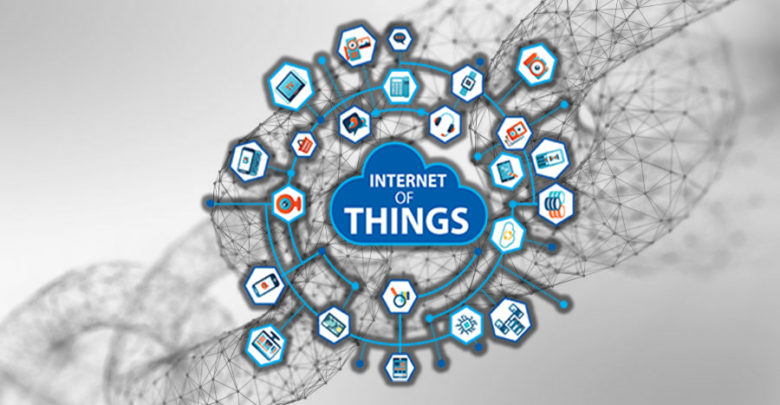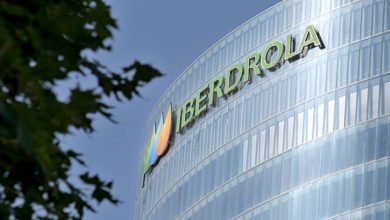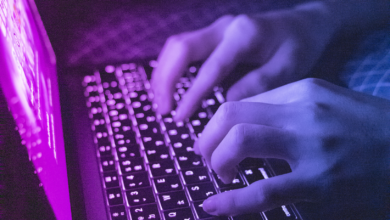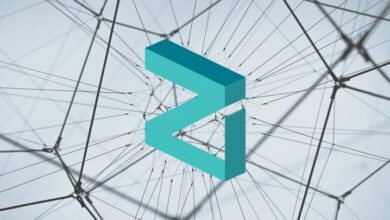Technology
IoT and Blockchain – A Match Made in Heaven?

Recently, IoT (Internet of Things) came into focus of the blockchain community with various partnerships that blockchain development companies have established with some of the most prominent players from multiple industries.
Even though IOTA’s system can’t be described as blockchain, their collaborations with Bosh and Volkswagen are the best examples of how distributed ledger technology can be utilized in combination with IoT.
If someone isn’t familiar with the expression, according to Ernst and Young, “The Internet of Things (IoT) describes the connection of devices — any devices — to the internet using embedded software and sensors to communicate, collect and exchange data with one another.”
IoT and the distributed ledger technology
IoT is, therefore, a common name for connected devices that collect, store, and share data. That data can be used for a wide variety of purposes. The example of IOTA and Volkswagen partnership perfectly describes how IoT, in combination with distributed ledger technology, can create a trustless environment. In this case, it stores the exact mileage of the vehicle.
It is no different with the standard blockchain technology.
The blockchain technology has several critical advantages over centralized systems that IoT was connected to in the past. The immutability and transparency can be counted as the most important ones as data gathered and stored on the blockchain by IoT connected device cannot be tampered with, providing a trustworthy source of information.
Adding a game-changing smart contracts feature to the equation, which allows each device to act autonomously, and execute predefined tasks on its own, we get the perfect all-around system.
Well, almost…
Application
Blockchain, in combination with IoT, has already transformed supply chains through the most advanced projects, such as VeChain, which is working with the Norwegian shipping giant DNV GL. There is also an excellent example of government’s blockchain development as South Korea now has a state of the art system for tracking beef from farm to fork through the use of IoT and the distributed ledger technology.
The last example is extremely important, because, by making it possible for end customers to check the origin of the meat in a completely trustworthy matter, the South Korean government lowered the risk of diseases transient from cattle to human, and annulled the possibility of the human error that was common in the traditional paper-based certificate system.
Otherwise, the natural connection between IoT and the blockchain technology can be utilized for a number of purposes. All kinds of permits and certificates can be checked by using an IoT sensor and verified on the spot.
However, there are some problems to be dealt with.
Problems
Since IoT devices continually collect and share (sometimes sensitive) data with the network, that system is a prime target for hackers. The blockchain is a hard ecosystem to attack successfully, but it has yet to be resolved how to protect the IoT device from various forms of intrusion which may, for example, cause it to send data to the wrong place.
Furthermore, the blockchain technology is known to suffer from the chronical lack of scalability. Since IoT devices constantly transact with the network to store the gathered data, the system may easily become congested and inefficient.
Moreover, various blockchain ecosystems are still not interoperable. Because of that, IoT connected devices are not able to communicate with each other due to the incompatibility of the systems they are connected to.
Lastly, we have legal issues. As the decentralized blockchain technology doesn’t have a central entity which holds power and responsibility for the system, in case of some form of harm caused by the malfunction of the system, it isn’t clear who should be held responsible.
Be that as it may, it is said that this combination has loads of potential. Especially when we take a look at the numbers presented by some leading market experts.
IoT future
According to the Gartner’s estimations, there will be 20.4 billion IoT devices installed by 2020, while BI Intelligence states that the number will be closer to 24 billion. A global provider of market intelligence and advisory services, IDC, tends to be more optimistic and estimates that 30 billion IoT devices are going to be connected by 2020.
Nevertheless, 5,000 various market experts gathered under the name IHS Markit, predict that as much as 125 billion IoT devices will be operable until 2030.
According to some estimations based on these numbers, the revenue based on IoT can reach up to $357 billion by the end of the next year, while others expect it to increase to $450 billion by the end of 2020.
Most significantly, an international management consulting firm, McKinsey & Company, shared their estimations, which say that IoT will have an $11.1 trillion impact on the global economy by 2025.
That is, indeed, formidable.
Still, the blockchain technology isn’t vital for the IoT system to function. It all depends on the needs of the entity developing the system. While blockchain provides more decentralization, transparency, and irreversibility, traditional systems provide more horizontal and vertical scalability.
However, the already proven use cases are telling us that there is definitely a future for the coexistence of these two complementary branches of technology.




Thanks again for the post.Much thanks again. Will read on…